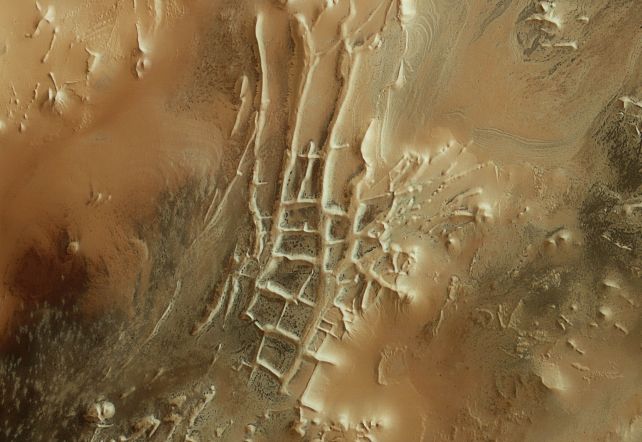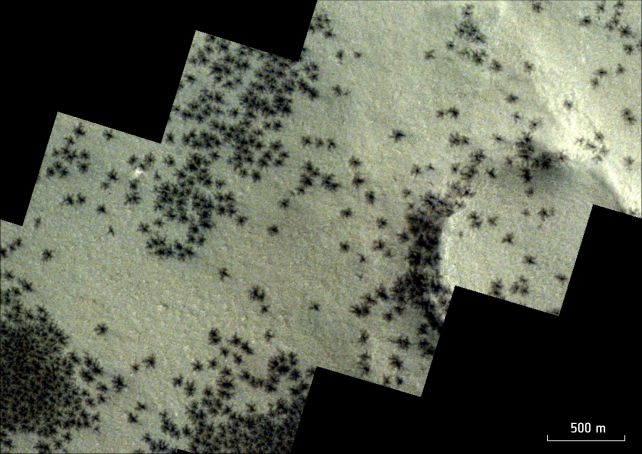There may not be any insects on Mars, but new photos from an orbiting spacecraft have revealed a plethora of ‘spiders’ that seem to scuttle across the dusty surface.
They’re not, of course, real, living arachnids; rather, they are dark, spindly features on the Martian surface created entirely via non-biological processes. They are named “spiders” because that’s sort of what they resemble, with a central dark splodge surrounded by thin streaks radiating outward.
They form as a consequence of seasonal changes on the red planet, the extremes of cold followed by spring warming.
Although Mars experiences seasons, thanks to a similar axial tilt to Earth, those seasons are very different from what we experience on our home planet. Winter temperatures dip below minus 123 degrees Celsius (minus 190 Fahrenheit), and nearly everything freezes.
That includes carbon dioxide, which forms surface deposits of a substance known as dry ice here on Earth. When the cold winter starts to turn to spring, temperatures warm; but where normal ice would melt in the warming atmosphere, dry ice does not. Instead, it sublimes directly into gas.

When this happens to ice at the bottom of the deposit, the pressure builds until a mini explosion happens, the Mars surface popping like a boil. Cracks appear in the ice, and darker dusty material from below the surface is carried and sprayed up with the escaping gas in huge geysers, creating dark splotches that can measure up to a kilometer (0.6 miles) across.
The radial lines are actually below the surface of the ice. In images from the High Resolution Stereo Camera (HRSC) on the European Space Agency’s Mars Express Orbiter, all you can see are dark spots, like freckles scattered across the sands.

However, the Colour and Stereo Surface Imaging System (CaSSIS) instrument aboard ESA’s ExoMars Trace Gas Orbiter can see across a wider wavelength range, and reveals the spidery tendrils radiating outwards, just below the surface of the ice.
A new image of Mars’ Inca city – a strange formation so-named because it resembles ancient ruins as seen from above – reveals the freckly spots all over, revealing just how active the surface of Mars can get when it starts to wake in the warming days of spring.
It’s fascinating to think what it would be like, with the ice popping open, the dust hissing into the air. Maybe, if we’re lucky, Martian explorers will one day be able to send home footage of the weird alien process in action.
